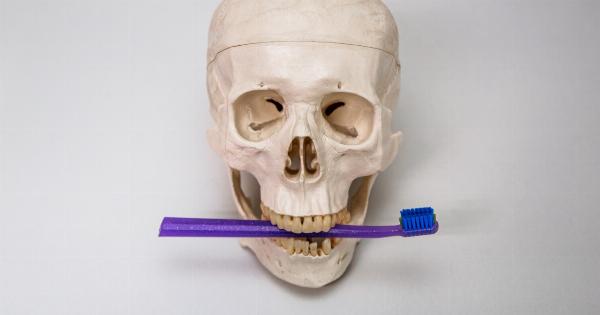Cancer is a disease that affects millions of people worldwide. It is a chronic disease that can be caused by many factors, including genetics, lifestyle, and environmental exposure.
Cancer can occur in any part of the body, and it is one of the leading causes of death globally. However, in recent years, there has been an alarming spike in cancer cases in younger generations.
The Rise of Cancer Cases in Younger Generations
Cancer is often thought of as a disease that affects older people. However, the incidence of cancer in younger people is increasing at an alarming rate.
According to the American Cancer Society, the incidence of colorectal cancer, for example, has increased by 51% among people aged under 50 in the last decade.
Other types of cancer commonly seen in younger individuals include breast cancer, testicular cancer, and melanoma.
In women aged under 45, breast cancer is the leading cause of cancer death, while in men aged between 15 and 44, testicular cancer is the leading cause of cancer death.
There are many potential factors that could be contributing to the rise in cancer cases in younger generations, including:.
Lifestyle Factors
Lifestyle factors, such as diet and exercise, can have a significant impact on the risk of developing cancer. Poor diet, lack of physical activity, and obesity are all risk factors for cancer.
Many younger people today have unhealthy diets and do not get enough exercise, leading to increased cancer risk.
Environmental Factors
Exposure to environmental toxins and pollutants can also be a factor in cancer risk.
Younger generations are often exposed to higher levels of environmental toxins than older generations, with things like pollution and chemicals in household products contributing to this risk.
Genetics
Genetics also play a role in cancer risk, and some forms of cancer may be more prevalent in younger generations due to genetic factors.
While some genetic mutations that increase cancer risk can be inherited from parents, others may occur spontaneously.
Screening and Diagnosis
Screening and diagnosis of cancer can also contribute to the rise in cancer cases in younger generations.
Improved screening techniques and increased awareness of cancer symptoms mean that cancer is being diagnosed earlier in younger people than it has been in the past.
However, some experts also suggest that increased screening could be contributing to overdiagnosis, with some cancers being detected that may never have caused any issues during a person’s lifetime.
This could also be contributing to the rise in cancer cases among younger people.
The Impact of Cancer on Younger Generations
The rise in cancer cases in younger generations has significant implications for both individuals and society as a whole.
For younger individuals, a cancer diagnosis can have a profound impact on their lives, potentially impacting their ability to work, socialize, and start a family.
For society as a whole, the increase in cancer cases among younger generations could have significant economic implications.
Younger people are often an essential part of the workforce, and cancer can result in significant costs for the healthcare system and lost productivity for the economy as a whole.
Prevention and Early Detection
Prevention and early detection are key to reducing the impact of cancer on younger generations. Lifestyle changes, such as adopting a healthy diet and exercise routine, can help reduce cancer risk.
Additionally, reducing exposure to environmental toxins can also help reduce cancer risk.
Regular cancer screenings are also essential for early detection. Younger people may not be aware of the need for cancer screenings, but they are an essential part of maintaining good health.
Early detection can lead to a more positive outcome, with many forms of cancer being treatable if caught early.
Conclusion
The alarming spike of cancer cases in younger generations is a significant concern for both individuals and society as a whole.
However, there are steps that individuals can take to reduce their risk of developing cancer, such as adopting healthy lifestyle practices and undergoing regular cancer screenings.
Additionally, continued research into the causes of cancer and the development of new treatments is essential to reducing the impact of cancer on younger generations.
By working to prevent cancer and detect it early, we can help reduce the burden of this disease on younger individuals and society as a whole.





























